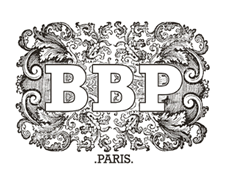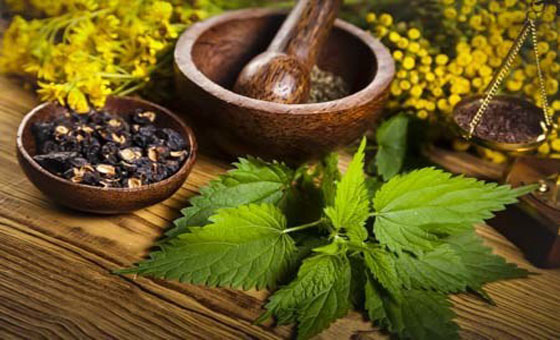One medicine for all is historically a very recent development of the 20th Century.
In the United States in the 1800’s, there were many different types or “schools” of medicine, including homeopaths, herbalists and many others, all of whom incorporated local folk remedies in their repertoire. Homeopathy became very popular during the 19th century, and claimed many adherents.
In those days, medicine was practiced by all types of people, including many women, black, working class, and poorer people, so that all communities were served.
There were sixteen women’s medical schools by and ten black medical colleges by 1900. The family doctor also knew folk remedies and herbal medicines, and had learned much from personal experience.
In 1917, Abraham Flexner came out with the “Flexner Report” which called for the standardization of medical education and practice, proposing that it should be built around laboratory science and clinical experience.
In addition, it proposed standards of professional behavior, and the exclusion of women, black, and the poor from practice. Homeopathic doctors and herbalists were frozen out of the mainstream.
We are now coming full circle. Biomedicine has learned a lot about what technology can do, and a lot of it has been helpful and life-saving. On the other hand, it does often cause unwanted and pathological adverse effects.
There also is much that biomedicine does not know, conditions it cannot understand or treat.
Many people, not content with the drug treatments that often don’t help chronic conditions, have gone for relief back to herbalism, homeopathy, and imported healing systems such as Chinese medicine and Ayurveda.
These medicines are now called either “alternative” or “complementary.” However, that is a questionable classification, because it always implies that biomedicine is the standard against which all medicines are to be measured, as “instead of” (alternative) or “in addition to” (complementary).
Let’s clarify that these “alternatives” are really the natural, traditional medicines of the world: 80% of the world uses herbal, shamanic, and other healing systems that area not based on drugs, surgery, and lab tests.
Alerted by many constituents about their interest in natural therapies, Congress directed the National Institutes of Health to form an Office of Alternative Medicine in 1992.
From a 1993 paper by David Eisenberg, published in the New England Journal of Medicine, the medical field was shocked to find out that one in three Americans uses what they called “unconventional therapies” such as chiropractic, homeopathy, acupuncture, and so on.
Even more of a shock was finding out that Americans spend as much as 13 billion dollars on these therapies, 10.3 billion dollars were spent out of pocket, unreimbursed by insurance.
This is more than people spend on allopathic medicine out of pocket. One interesting fact is that alternative therapists are hardly ever sued for malpractice!
As a result, allopathic medical institutions jumped on the bandwagon, and now there are a number of medical schools offering courses in the field or “complementary medicine,” there are several conferences per year on the subject, and there are two respected peer-reviewed journals covering the theme.
A recent article in Time Magazine on “Challenging the Mainstream”, in its special issue on “The Frontiers of Medicine,” estimates that at least 3000 physicians have begun to incorporate acupuncture into their practices.
Insurance companies such as Kaiser-Permanente and Oxford are beginning to pay for some alternative therapies.
We all need to educate ourselves in what is available to help us maintain and regain our health. What follows is a list of six popular natural healing therapies with a very brief description of each.
Chiropractic: Focuses on the relationship between structure (primarily of the spine) and function (primarily of the nervous system) of the human body.
Relies heavily on hands-on procedures using touch, manual interventions and spinal adjustments to realign the spinal vertebra.
These procedures are intended to allow nerve impulses to travel freely, enhancing immune function and restoring health. Useful for low back pain, possibly for stress, falls, sprains, and misalignments.
Homeopathy: Formulated by German physician Samuel Hahnemann in the late 1700, homeopathy is based on the principle that “like cures like.” In other words: a substance that can cause certain symptoms when given to a healthy person can cure those same symptoms in someone who is sick.
Homeopathic medicines are “potentized”, or highly diluted through successive shaking. In classical homeopathy, only one remedy is given at a time, and usually only once: its effects are considered to “snowball.” Useful with minor inflammations, infections, childhood fevers and illnesses, allergies, adverse effects from drugs.
Homeopathy is also successfully used in veterinary medicine. Homeopaths called interventive medicine (which uses drugs and surgery to eliminate symptoms) “allopathy,” meaning “curing by opposites.”
Acupuncture: One of the modalities of Chinese Medicine, acupuncture consists of the direct manipulation of the body’s “energy flow,” called chi or qi, which courses through a network of invisible meridians along the surface of the body.
These meridians also connect with the inner organs. The different points on the meridians are stimulated through the insertion of fine disposable steel needles, so as to regulate the flow of qi and thereby to maintain or restore health.
While it can be used to “treat” various conditions, acupuncture is traditionally used as a “tune-up” or prevention, as the maintenance of a harmonious energy flow is thought to maintain health. Useful for pain, arthritis, chronic illness, disorders of function such as irregular menstruation or weak digestion.
Herbs: Chinese – Western: The use of plants for healing is as old as humanity, and every culture has its specific local herbs. In Chinese Medicine, herbs have been used to relieve pain, hormone disturbances, breathing disorders, infections, and chronic debilitating illnesses.
In Europe and the United States, herbal medicine had been a staple of the family medicine chest until the 1940’s, when it was gradually replaced by patent medicines and over-the-counter drugs.
It is now regaining credibility, as simple, effective, economical, and less toxic than pharmacological products.
Herbal remedies are commonly used for digestive problems, coughs, colds, flu, sore throats, and immune enhancement.
Massage – Bodywork: Massage therapy is the manipulation of the soft tissues of the body by applying fixed or movable pressure and holding, primarily with the hands but sometimes also with the forearms, elbows, or feet.
It is aimed at achieving or increasing health and well-being by releasing tension and loosening muscle knots. Some 80 different methods may be classified as massage therapy, including Swedish, Shiatsu or Acupressure, Deep Tissue Massage, and Sports Massage.
In addition, there are structural and functional integration methods that bring about a more balanced use of the nervous system through creating new, integrated patterns of movement; among them are Rolfing, Trager, Feldenkrais, Alexander, and Rubenfeld Synergy.
Useful for stress, tension, muscular knots, emotional disorders such as anxiety and depression. Massage has been proven useful for more rapid weight gain and growth in premature infants.
Food Therapies: These are used in the medical field (low cholesterol, low purine, PKU, ketogenic diets) as well as in the “alternative” field (macrobiotics, vegetarianism, food combining).
Different diets are useful as therapies to combat allergies, candidiasis, overweight, cardiovascular problems, cancer, repeated colds and ear infections, skin problems, digestive disorders, phenylketonuria, osteo-arthritis, epilepsy, and many other conditions.
A healthy, nourishing, well-balanced daily diet can prevent many acute and chronic illnesses, especially cardiovascular disease and cancer.
Reference: Alternative Medicine: Expanding Medical Horizons, A Report to the National Institutes of Health on Alternative Medical Systems and Practices in the United States.
Prepared under the auspices of the Workshop on Alternative Medicine, Chantilly, VA, September 14-16, 1992. US Government Printing Office, Superintendent of Documents, Washington, DC.

